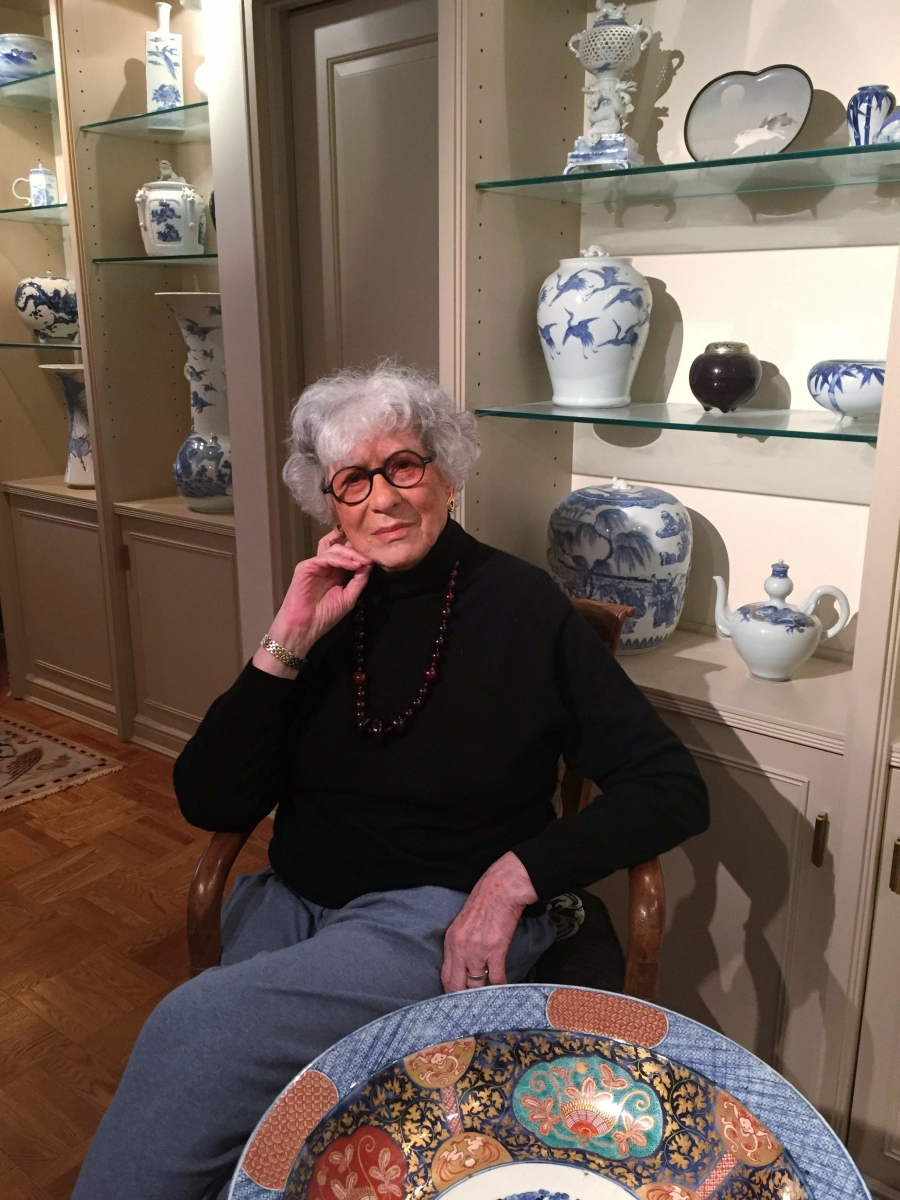NEW YORK CITY – “Sadly, the doors of Flying Cranes Antiques are now closed. The approach of my own ninth decade tells me that it is time…
“But goodbye it is, and many thanks to all of you for your interest and for your loyalty. I miss you already.”

A silvered-bronze okimono of a goose, a small frog at its feet, gold, shakudo and shibuichi detailing, Seiji signature in oval cartouche under tail feathers. Provenance: Mr and Mrs Vincent Sardi, Vermont.
What is this – an April Fool’s joke? The phone screeched and emails poured in from all over the world. Clients were incredulous. This response to my notice stunned me. I was more than pleased.
Flying Cranes Antiques will be missed.
It has been more than 40 years since my late husband Cliff and I established our “mom and pop” business, then a mad foray into the flea-market world. We would drive up to our Connecticut cottage on weekends and scout the area for “finds.” We could hardly wait for Saturdays and Sundays.
Our introduction to Japanese art occurred during one of those weekends.
On the Green in Litchfield, my husband purchased a box lot of assorted junk. Lying near its bottom lay a vase of exquisite form, its body encircled by flying cranes. The light bulbs flashed and our life’s passion was born.
As part of the learning process, we participated in various outdoor and indoor fairs around the area, packing our “art” in cartons and returning to our New York City apartment early Monday mornings.
It didn’t take long before a “cease-and-desist” notice from management arrived in the mail. Soon after, in 1985, we opened our first of many galleries at the Manhattan Art and Antiques Center in midtown with Meiji art the focus.
We both were still active in our careers – my husband, the owner of a New York City-based business-machine establishment and I, the principal of a corporate-design consultancy, also based in the city. Juggling these activities became a full-time concern.
We decided from the first that our gallery environment would be warm and informal. Nothing clinical, cold and forbidding. No whispering. Clients would come first. Bach, Mahler and other treasured sounds would be welcoming.
The finest selections of Meiji art, in all categories, would be the norm.

A major Meiji period bronze vase, inlaid and overlaid with precious multimetals and colored enamels, signed by Suzuki Chokichi with his art name, Kako, and having a double mountain mark on base. A similar vase is exhibited in the V&A Museum in London.
Flying Cranes would be home to the serious collector, home to the museum curator, home to royalty internationally. Flying Cranes would be home.
Our vision seemed to work. Since our initial discovery of the vase with the flying cranes, constant study and discussions with experts in the field provided invaluable experience. Through the handling of objects in other galleries and participation in major fairs in New York City and throughout the United States, our firm became known and eventually, a force within the antiques community.
Flea markets are remote memories. Now, our rare, fine examples from the late Nineteenth Century’s Meiji period reside in world-famous collections and museums in the United States and overseas.
Our passion for the arts of this period is reflected in the superb quality of the metalwork, cloisonné, ceramics, carvings and lacquers created by the artisans during these years. Those master craftspeople played a powerful role in the art world of the time.
By channeling their knowledge of technology and materials to their creative vision, they, along with the young emperor Meiji, presided over a 44- year reign, a rich, fertile and dynamic aesthetic – defining this glorious era as the Golden Age of Japan.
As one of our valued midwest clients wrote after learning of the gallery’s closing, “I cannot tell you how sad it makes me to know that I can’t come to New York and walk through busy streets to Flying Cranes and step into that quiet, glowing Aladdin’s cave of beautiful objects.”
The collections of Flying Cranes Antiques now are owned by the purchaser. The future is in his hands… the memories, mine forever.
-Jean Schaefer, April 2017














